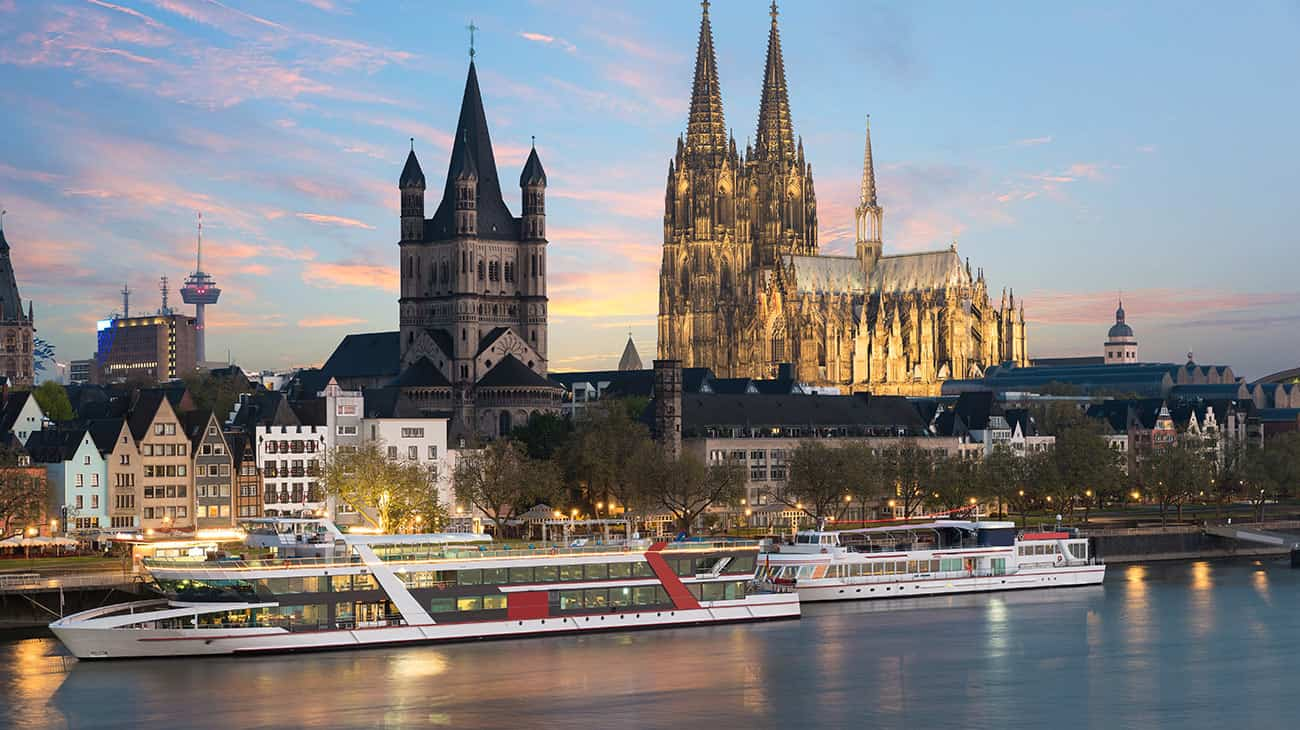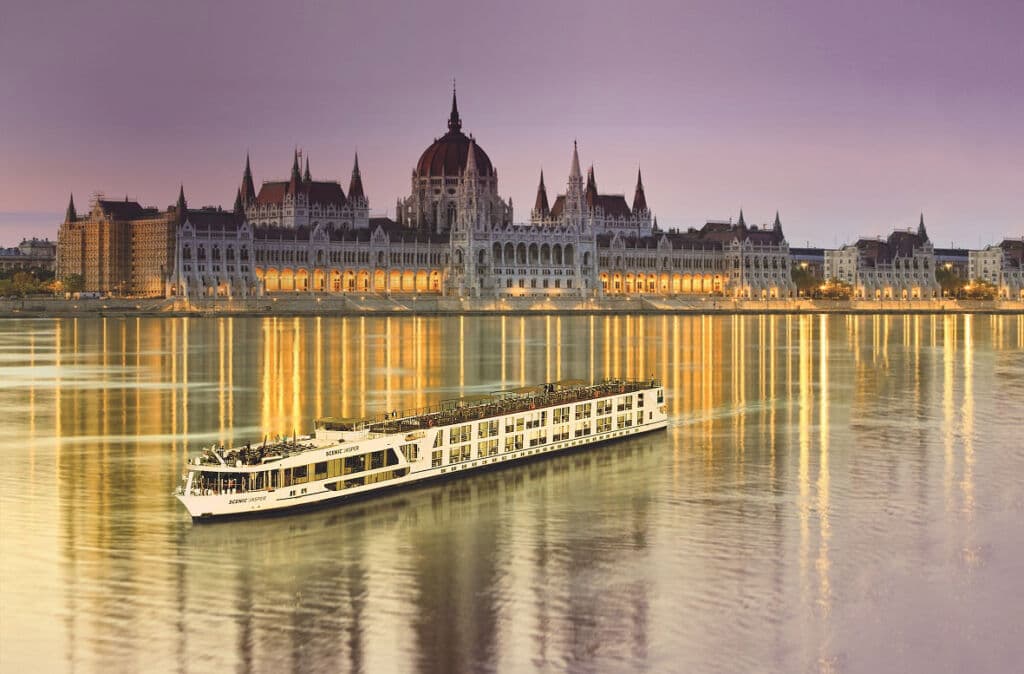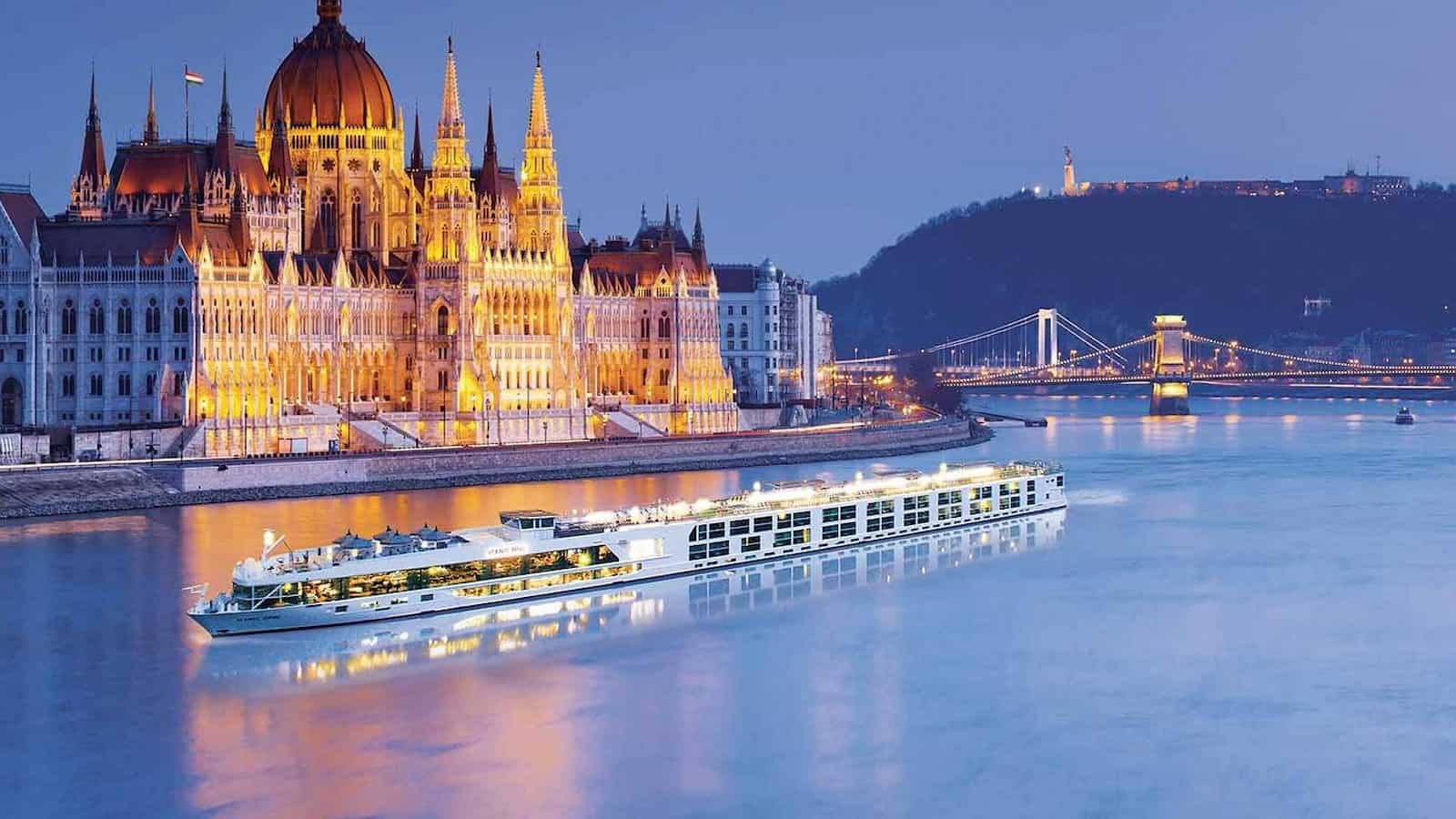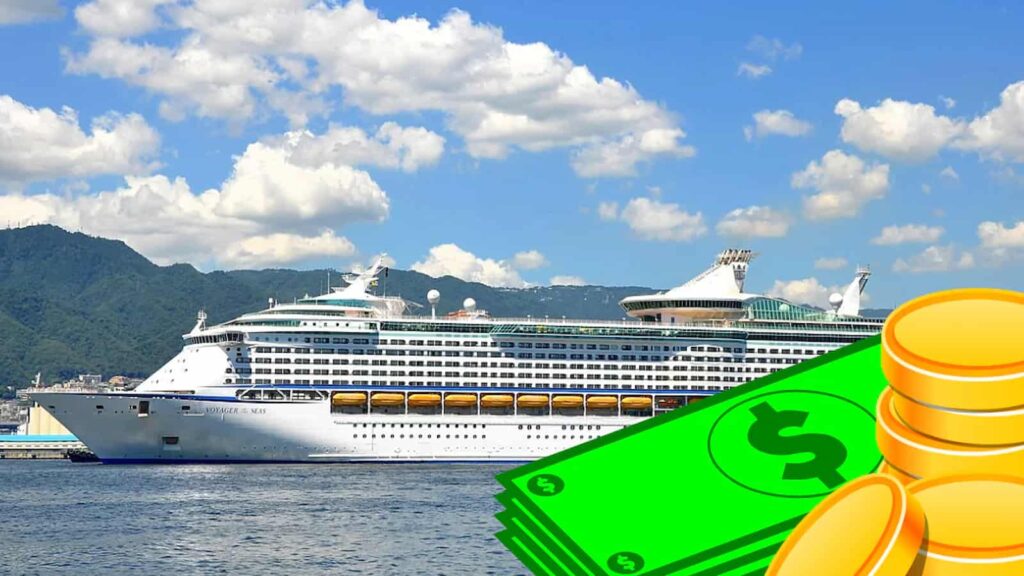Europe River Cruise: Once a very specialized form of European travel, river cruises have become one of the most popular methods to see what the continent has to offer in the last ten years. It can be difficult to choose which European river cruise is best for you, but if you can just answer a few questions for yourself, it should be a lot simpler. The key is to choose precisely what kind of experience you are looking for from your river trip; every river has different activities to offer visitors of various interests.
You’ve undoubtedly already responded to the first query if you’re considering river cruises: How would you like to see Europe? You may visit every location on your itinerary while on a river cruise because your hotel moves with you, saving you the trouble of packing and unpacking at different hotels every few nights. In addition, since you will be travelling that distance in the comfort of the riverboat, you won’t need to worry about how long it will take to get to the next city.
Facts About Europe River Cruise

Riverboat Cruises Are Packed
While river cruises on European canals involve a daily stop with a busy (though entirely optional) touring itinerary, ocean cruises offer “sea days” with plenty of time to unwind. Consequently, there’s not always as much time to relax onboard as you may imagine if you want to get the most out of your trip.
Enjoy More on a River Cruise
Daily trips are typically included in the cost, except for a few river cruise lines that provide a “a la carte” shore excursion schedule. These include informative walking and motorcoach tours of the towns and cities along the way, as well as immersion activities like tours of historic castles, visits to vineyards, and culinary tastings. Certain lines also include rather out-of-the-ordinary extra-charge options, such as bike tours, access to private evening performances, culinary classes, painting lessons, and even the opportunity to enjoy tea in the homes of residents.
River Cruises in Europe Are Not the Same as Ocean Cruises
The bulk of river cruises in Europe last one week and usually visit three countries; however, some cruise lines offer lengthier journeys that last two weeks or longer. The majority of itineraries involve an overnight stay on board, and they nearly always begin in breathtaking destinations like Paris, Amsterdam, or Budapest. To allow customers to spend more time in these places, companies also provide pre- or post-cruise accommodations.
It should be emphasized that, to pass under bridges and fit into locks, almost every ship on the Rhine and Danube is precisely the same size. The number of passengers (some lines carry up to 190, some carry less), onboard amenities like massage rooms and gyms, and inclusions (some lines include all drinks and gratuities) are all reflected in the price differences in rates.
Seasonality exists
Finally, a word of caution regarding river cruising in Europe: the season usually lasts from April to October, except special Christmas market trips. Be advised that the rivers may swell and the locks may become impassable due to severe rain and spring flooding. (Many are beneath bridges, so boats can’t fit underneath if the water is too high.) Low water can also be an issue during protracted dry spells. If the vessels are unable to move, you will either be transferred to another ship further down the river or, if logistics permit, driven to the attractions by motorcoach.
Celebrity vs. Royal Caribbean: Differences in Nightlife, Dining, and Onboard Vibes
4 Perfect Europe River Cruises for Your Vacation
1. The Main, Moselle, and Rhine River cruises are ideal for exploring Europe’s waterways

The Rhine river cruises blend centuries of history and culture with breathtaking landscape and some of the oldest and most historic cities in Germany. The Rhine has more castles than any other river. The lesser-known Moselle flows through Luxembourg and northeastern France before merging with the Rhine at Koblenz. Travel down the Main River, which originates in eastern Germany and empties into the Rhine, and you’ll find yourself in the Main-Danube Canal, which allows boats to enter the famous “Blue Danube,” the entrance to Hungary and beyond.
How Do Itineraries on the Rhine, Moselle, and Main Rivers Look?
The Rhine, a 776-mile river that winds through six nations (Switzerland, Liechtenstein, Austria, Germany, France, and the Netherlands), is the most popular river for cruise holidays and an excellent place for first-timers to set sail.
One-week trips between Amsterdam and Basel, or vice versa, are the most popular Rhine cruises. The scenery, which consists of steep grape slopes, fairytale castles, and medieval cities, changes constantly.
The Upper Middle Rhine Valley, which is home to numerous castles and historic wine-growing villages, is the cruise’s most picturesque stop. UNESCO has listed it. On the sun deck, music is frequently playing along with free drinks as ships approach the fabled Lorelei rock, a sheer 433-foot slate cliff where a beautiful siren was believed to lure passing sailors to their deaths.
Weeklong cruises typically stop at Heidelberg, which has a castle perched on a steep hilltop, and Rudesheim, which has its busy Drosselgasse street. Constructed during the 13th and 17th centuries, this building has seen turbulence in the past and demonstrates that the proverb “lightning strikes twice” is untrue, as it was struck in 1537 and 1764.
The city’s highlights include Koblenz, where the Ehrenbreitstein Fortress, one of Europe’s largest castles, dominates the landscape, and Cologne, which is well-known for its iconic twin-towered Gothic cathedral that took 630 years to construct. Longer routes from Koblenz include a stretch of the Moselle, which meanders through the center of Germany’s wine-producing region. The Moselle, which is narrower and quieter than the Rhine, winds past little wine towns like Cochem, which has an enchanting old town with half-timbered homes. Lastly, Strasbourg in France presents you to the sights and cuisine of Alsace.
Rhine cruises can also be scheduled to take place in conjunction with yearly occasions, like the magnificent Rhine in Flames fireworks celebration, which happens in September to commemorate the harvest of wine.
How are the Rhine, Moselle, and Main rivers accessible?
After taking a quick flight to your embarkation port (Amsterdam, Basel, Cologne, and Frankfurt are common places to start), you’ll board your ship.
What Should I Look Out For When Selecting a Cruise Along the Main, Moselle, and Rhine Rivers?
Not every vista is as picturesque as it seems. Along the way, you’ll undoubtedly pass by unsightly power plants and industrial zones. You might even moor next to a road or an ordinary apartment building. One who is prepared is prepared.
Which Activities Are the Greatest on a Main, Moselle, and Rhine River Cruise?
Cruises from Amsterdam to see the tulip fields are available in the spring.
You can also combine itineraries and cruise the Moselle and Main, sailing between the Roman-founded city of Trier, which is home to the magnificent Porta Nigra, one of the city’s original gates, and Nuremberg, which gained notoriety for housing Nazi rally grounds and Nazi war crime trials following World War II. Cruises depart from Amsterdam to Trier, Trier to Budapest, and Amsterdam to Basel via Trier are available.
The most delightful activities on a Main, Moselle, and Rhine river cruise in the winter include visiting the charming Christmas markets in places like Cologne, Frankfurt, Amsterdam, and Basel.
2. Danube River Cruises

The Danube is a charming river and the source of Johann Strauss’s well-known waltz. A Danube river cruise enlightens you about the past, including the era when Vienna served as the capital of an empire and more recently, when the Iron Curtain divided Europe.
How Would an Itinerary for the Danube River Look?
The Danube travels through Austria, Slovakia, Hungary, Serbia, Croatia, and Bulgaria before emptying into the Black Sea in Romania from the Black Forest in Germany.
The most common routes are week-long round journeys from Passau or one-week sailings from Budapest, Hungary, to Passau, Germany, which is located near the Austrian border. Especially beautiful is the Wachau Valley, a UNESCO World Heritage Site sandwiched between the Austrian towns of Krems and Melk. The beautiful Vienna, with its opulent palaces like the Hofburg, from which the Habsburgs controlled Austria for 700 years, is one of the city’s attractions. The Spanish Riding School also has stunning white Lipizzaner horses for you to view. There are daily stable tours and visitors may see the morning exercise sessions to music, which take place in the elaborate, chandeliered riding school, however scheduling a trip to coincide with one of the evening dressage exhibitions can be challenging.
The famous Chain Bridge from the 19th century connects Budapest, the capital of Hungary, which is a city with a rich cultural heritage. More hot springs than any other city in the world may be found in Budapest. The largest is Szechenyi, and Gellert is renowned for its exquisite architecture.
You will also visit Salzburg, Mozart’s birthplace and hub for “Sound of Music” ties; Melk, with its expansive Benedictine Abbey; and Linz, in the heart of Austria’s wine-growing region, from which it may be possible to take excursions to Durnstein and Esztergom in Hungary.
How is the Danube River accessible?
Passau is where most trips begin and end. Most likely, you’ll travel by plane to Munich and then change to a ship. Passau is less than two hours away from Munich, and most cruise companies offer shuttles. It’s also worthwhile to think about spending a few additional nights in Munich, the beer garden-famous city of Bavaria.
When selecting a Danube River Cruise, is there anything I should be aware of?
Due to the volume of ships on the river, moorings in Vienna and Budapest are next to busy roadways, and you may find yourself anchored next to another boat.
Which Activities Make Up the Greatest Danube River Cruises?
From Budapest, Lower Danube cruises lead travelers eastward via Serbia, Croatia, Bulgaria, and Romania on their way to the Black Sea. This section of the Danube is known for its abundant fauna and is far less frequented. It is also peaceful. Additionally, these two-week cruises usually include two nights in Budapest at the beginning of the route and two nights in Bucharest at the end.
Stops include Serbia’s Belgrade, one of the oldest capital cities in Europe, where you can visit the memorial of former Yugoslavian Communist leader Josip Tito, and the world’s largest Orthodox church, Sveti Sava. Bratislava, Slovakia’s compact capital, has a charming Old Town.
The breathtaking Iron Gates Gorge, which is actually four gorges combined under one name and stretching 90 miles between the Carpathian and Balkan mountains before narrowing to less than 500 feet at one point, is another highlight of these trips. A 40-foot statue of King Decebalus, one of the most powerful kings of the ancient Dacians, stands guard at the entrance.
What is Trans-shipment? A Cost-Effective Solution for Shipping Industry
3. Douro River Cruises

The Douro river in Portugal is a great place to go cruising if you enjoy beautiful scenery. It starts in Spain and winds its way through untamed and stunning green landscapes before emptying into the Atlantic at Porto, the nation’s second-largest city and the location of well-known port houses. There are several opportunities to sample the national beverage, fortified wine, along the way.
How Would an Itinerary for the Douro River Look?
There is just one route on the Douro, sometimes known as the “River of Gold”; it is a 130-mile, seven-night sail from Porto to Vega de Terron, which is located on the Spanish border. The river is no longer passable at this point, therefore river vessels must turn around. Most cruises start or finish with an overnight stay in Porto, a hilly city recognized as a UNESCO World Heritage Site, where guests can choose to go on a ride on a classic rabelo, one of the wooden ships that used to transport goods.
The Douro was formerly a ferocious, wild river, but five dams, including the famous Carrapatelo lock?the deepest lock in the world?have calmed it down. Sailing by the 115-foot walls is an amazing experience. Cruise ships make port wine region stops at Regua, from whence excursions to Lamego depart. The major draw of Lamego is the pilgrimage church dedicated to Our Lady of Remedies, which dates back to the 18th century and is situated atop a 686-step baroque staircase. Walking down after the visit is an option for passengers.
Additionally, you’ll make stops at Vega de Terron for a full-day excursion to the Spanish city of Salamanca, as well as Pinhao, a popular destination for port wine tastings. Salamanca, a two-hour journey from Vega de Terron, is a marvel of architecture with a large main square encircled by three-story arcade buildings and constructed in the Spanish baroque style.
It’s also worth noting that you get to see all of the passing scenery as night navigation on the Douro is prohibited. Moreover, the Douro river ships are smaller than those on the Rhine and Danube, which fosters a cozier feel within.
How to Get There
It takes only a brief transfer to board the ship, and you will fly into and out of Porto.
What Should I Look Out for When Selecting a River Douro Cruise?
Unlike other European rivers like the Rhine and Danube, which served as trade conduits for the towns and cities that developed along their banks, a cruise on the Douro is unlike any other. Mooring spots usually offer limited views, and motorcoaches are necessary to go to interesting locations. It’s all about taking in the view and sipping on the local libation.
What Activities Make a River Douro Cruise the Greatest?
Spend an additional two nights in Lisbon before or after your Douro cruise. Portugal’s capital, situated on seven hills at the banks of the Tagus River, served as the starting point for renowned explorers who ventured off to discover uncharted territory during the 16th and 17th centuries. Lisbon thus blends tradition and culture with the energy of a contemporary, global metropolis, in addition to having a strong maritime history that traces the Golden Age of Discovery.
If you enjoy beautiful scenery, you will enjoy traveling on Portugal’s Douro River, which rises in Spain and winds its way through untamed and dramatic green landscapes before emptying into the Atlantic in Porto, the nation’s second-largest city and the location of well-known port houses. There are several opportunities to sample the national beverage, fortified wine, along the way.
4. Elbe River Cruises

For those who enjoy history and discovering a lesser-known European river, River Elbe Cruises are ideal.
Anyone who enjoys learning about the past and wants to see one of Europe’s lesser-known rivers should take an Elbe trip. Along the route, there will be opportunities to explore the site of the Reformation’s genesis and spend time in the intriguing cities of Berlin and Prague at the beginning and end of the journey.
River Cruise Cabins: What to Expect in Terms of Cabin Choices
How Would an Itinerary for the River Elbe Look?
Starting in the Czech Republic, the Elbe River travels through Germany and empties into the North Sea at Cuxhaven, which is close to Hamburg.
There is only one cruise option available: a seven-night voyage that sails from Germany’s Magdeburg to the Czech Republic’s Melnik, or the other way around. Between the culturally vibrant capitals of Berlin and Prague, there are cruises that pass through the Saxony vineyards and the stony terrain of the towering sandstone massif south of Dresden.
Dresden, which the Italian painter Canaletto depicted as “Florence on the Elbe,” is one of the must-see locations and has undergone magnificent restoration. After being completely destroyed during World War II, Dresden emerged above the wreckage. One of the city’s main attractions is the restored Cathedral of Our Lady, which is known for its unusual bell-shaped dome and serves as its emblem.
Meissen is a charming town that is well-known around the world for its exquisite porcelain. One of the excursions involves visiting a factory to witness the artisans at work. One of the most important people in Christian history, Martin Luther, started the Protestant Reformation in 1517 when he nailed his theses to the Wittenberg Castle Church door.
Along the way, you’ll pass through the rugged Saxon Switzerland and stop at Litomerice, a charming little town in the Czech Republic with a blend of Baroque, Renaissance, and Gothic architecture.
How can I travel to the Elbe River?
Depending on which way you are sailing, you will either fly into Berlin and out of Prague or the other way around.
What Should I Look Out for When Selecting a River Elbe Cruise?
There is a lot to see on this busy route, so if you have mobility issues, talk to your river cruise operator beforehand.
What Makes a River Elbe Cruise the Greatest Activitie?
There is only one itinerary on the Elbe, but in order to make this trip complete, you really need to add extra days to Berlin and Prague at the beginning and finish (which are included in some itineraries). It is also important to think about when you want to go. Traveling in the sunny summer months, which fall within Europe’s peak vacation season, is a popular choice. This can be an excellent time to come if you don’t mind standing in line for tours or seeing larger crowds at each location, particularly if you have limited time.
Traveling in the shoulder seasons of early spring or late autumn will allow you to witness the seasonal changes in European landscapes, which are characterized by their unmatched beauty and a vibrant array of fresh hues. The somewhat colder weather throughout these months shouldn’t stop you if you’re wearing the appropriate jacket!
Rhine and Danube River cruises in November and December showcase the classic and intriguing Central European Christmas Markets, where stallholders illuminate the medieval villages and animate the squares with handcrafted goods and mouthwatering holiday delicacies that have been passed down through the decades.
If you’re determined to travel to Europe in January or early March, you might be able to get a fantastic offer even if there aren’t many possibilities for European river cruises around that period.
Of course, the amount you choose to pay must also be taken into account. Although the luxury river cruises cost more than $400 per day, they do provide all the amenities, service, and itineraries one could want. Although they won’t be quite as pricey, some fantastic first-class cruises provide a similarly captivating river cruise experience. If all you want to do is see and experience Europe but have a slightly less budget, there are other affordable possibilities.


